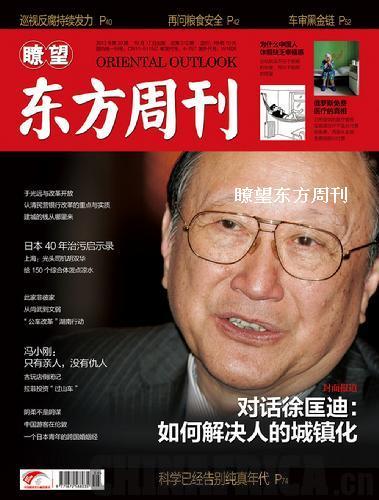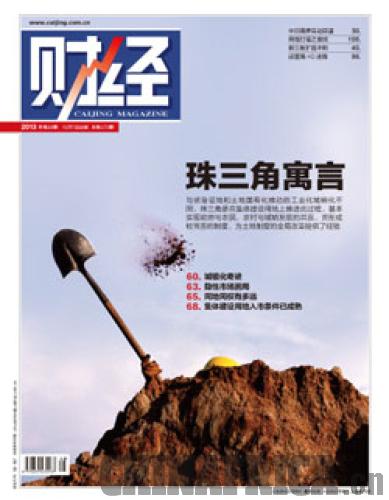| 
People First
Oriental Outlook
October 17, 2013
Since 1993,Chinahas accelerated its pace of urbanization, with around 20 million rural people working in cities every year. By the end of 2012, the country had urbanized 52.57 percent of rural areas, covering a population of 720 million. This figure is above the global average .
Oriental Outlookthis issue looks at Chinaís urbanization. One of the problems it presents is that the urbanized population is unstable. A large number of rural migrant workers have yet to settle down in cities because of the lack of permanent residence identity. Some of them have to return home due to unemployment and rising living costs in cities.
Xu Kuangdi, former Vice Chairman of the National Committee of the Chinese Peopleís Political Consultative Conference, noted that Chinaís urbanization should lay emphasis on helping rural people transition to urban life rather than building cities on a large scale across the country.
In addition to more job opportunities, it is also important to offer equal social welfare and education opportunities for migrant populations in cities.

Land Transfer Policy
Caijing Magazine
October 7, 2013
As the Third Plenary Session of the 18th Central Committee of the Communist Party of China draws near, expectations are high on loosening the policy on transferring collectively owned rural land use right.
Caijing Magazinelooks at this issue. Chinaís Ministry of Land and Resources says that Chinaís land management system wonít undergo substantial reforms because on the one hand, the transfer of collectively owned rural land use right will cause farmers to lose their land, leading to social unrest; on the other hand, local governments oppose such reforms because free transfer of collectively owned rural land use right weakens their dominance of land sales.
Land transfer protocols in south Chinaís Guangdong Province have provided insight into how land transfer reform might become possible. During the three decades since Chinaís reform and opening up, loose land use right transfers in the Pearl River Delta area have provided not only buildings for Hong Kong and Taiwan factories, but also homes to workers swarming to the region.

Sweet Hazards
ChinaNewsweek
October 14, 2013
InChina, diabetes has become one of the biggest threats to health. The magazine looks at the diabetes epidemic inChina.
According to statistics from the International Diabetes Federation (IDF), there is one diabetic patient among every 10 Chinese. The number of diabetics inChina reached 114 million in 2012, topping the world.
However, most Chinese remain unaware of the diseaseís risks. More than three quarters of Chinese diabetic patients do not receive timely medical treatment after diagnosis, mainly due to an initial lack of pain and poor knowledge about the disorder.
High caloric diets and a lack of exercise are two of the biggest risk factors associated with the disease. If measures are not taken soon,Chinawill undoubtedly suffer the consequences of a spreading diabetes problem.
Housing the Elderly
GuangzhouDaily
October 14, 2013
Homes for the aged have become a rare resource in terms of social welfare inBeijing. It is reported that at present, a new client has to wait 100 years for a bed at the capitalís First Social Welfare Institute.
Similarly, the cost of social services for the aged is skyrocketing in south Chinaís Guangdong Province. Many rest homes there charge over 10,000 yuan ($1,637) per month. Even so, business is booming.
Expensive prices should mean high quality service; but in many cases it doesnít. Good care homes are few and far between compared to the rising demand inChina.
There is thus an urgent need for affordable facilitates for senior citizens. Currently, Chinaís investment in social welfare for an increasingly aging population is insufficient. And the private sector faces a series of restrictions in developing homes for the elderly, mainly related to land, finance and market access.
Authorities plan to reform the current social welfare system, and a new policy is expected to be worked out by the end of this year. It is hoped that more old-age homes could soon be made available.
|